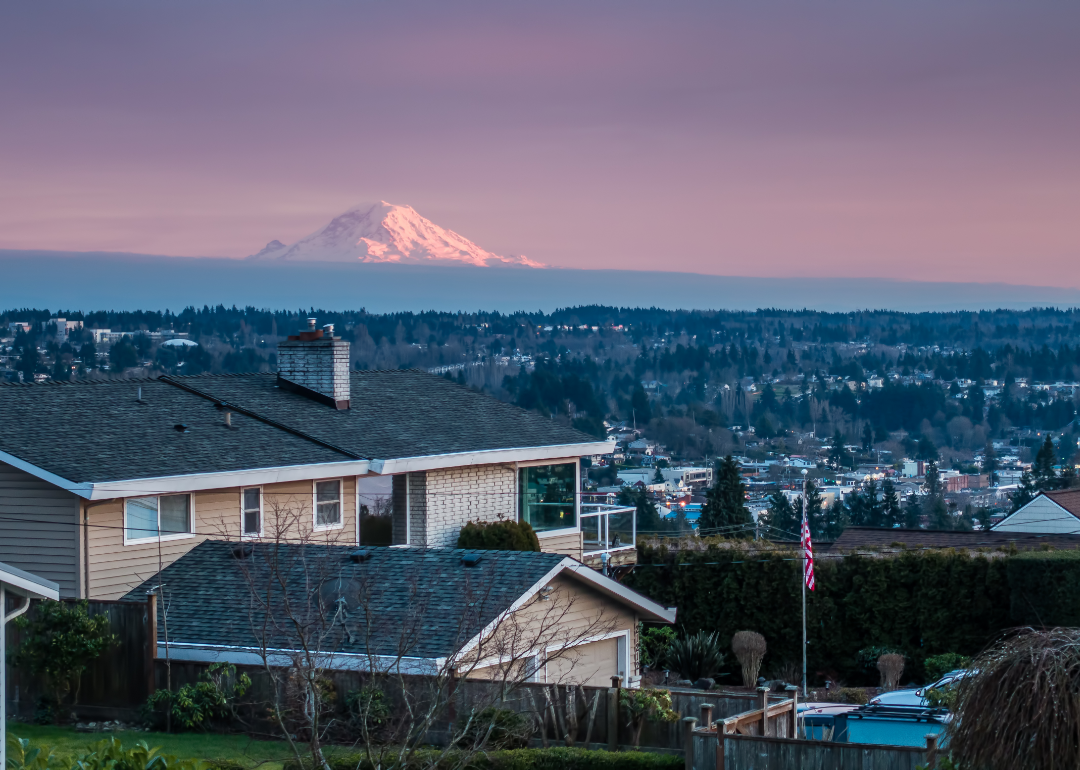Business
Best West Coast small towns to live in
Published
1 year agoon

The American dream of buying a home in a quaint small town is still alive and well. A growing number of people consider rural living ideal: In 2021, small towns and rural areas gained population, while cities lost people, according to a New York Times analysis of Census Bureau data.
A Pew survey in October 2021 found that about 1 in 5 Americans (19%) would most like to live in a city, but 35% wanted to live in rural areas, and 46% preferred suburbs. Inflation may mean some of those people can’t afford to leave cities or must go back, but their preferences remain.
Of course, a small town in a great location will always be more popular than one that’s truly remote. That’s where this list of the best small towns on the West Coast comes in handy. Stacker referenced Niche’s 2022 Best Places to Live and filtered the results to the West Coast and then narrowed them further to places under 5,000 residents. Niche calculated the best places to live based on cost, safety, weather quality, access to healthy living, and other factors.
Whether you’re considering a move or just want a peek into what small-town life could be like, this list will certainly inspire some home searches.
You may also like: Best place to live in every state
![]()
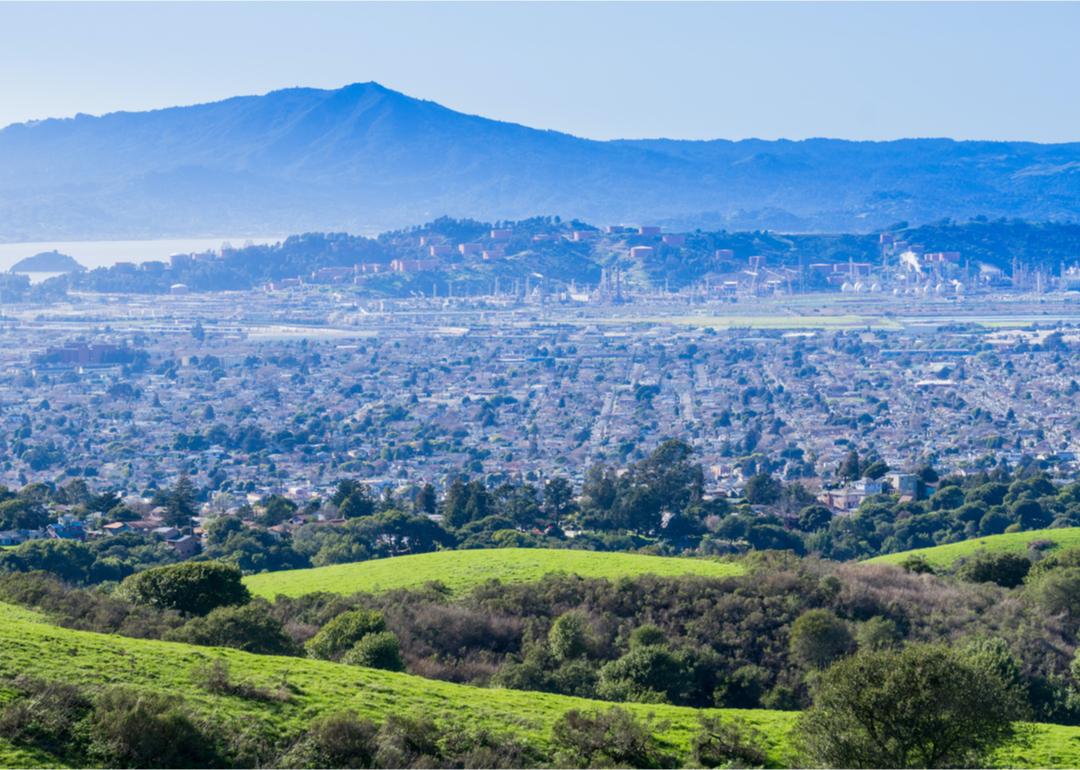
Sundry Photography // Shutterstock
#25. East Richmond Heights, California
– Population: 3,355
One Oakland Tribune advertisement from 1913 called East Richmond Heights “the garden of the gods.” Though that slogan might have been exaggerated to sell tracts of land, this quiet, small town still ranks highly for its diversity and family-friendly lifestyle.
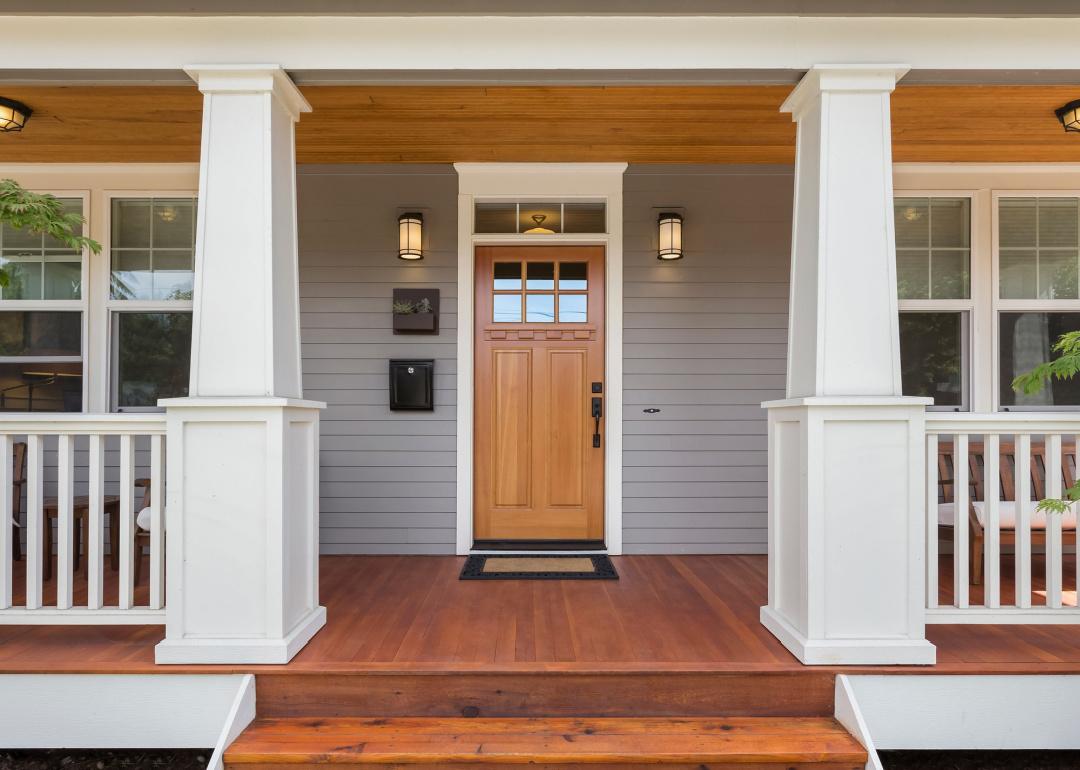
Justin_Krug // Shutterstock
#24. Mirrormont, Washington
– Population: 4,196
Mirrormont, just west of Tiger Mountain State Forest in the southeastern suburbs of Seattle, was founded in 1962, with large lots featuring plenty of trees—and signature A-frame style homes. With great schools and outdoor activities nearby—including golf, tennis, and swimming at the local country club—it’s known for its privacy and strict rules to protect the neighborhood’s rustic character.
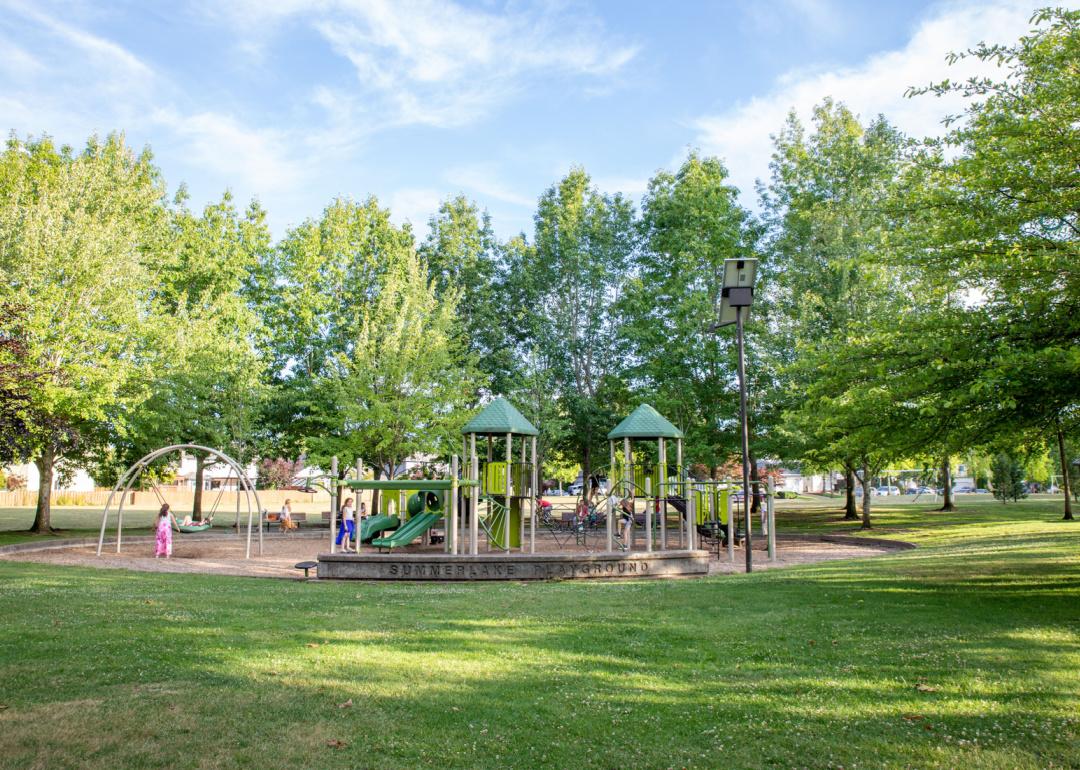
ARTYOORAN // Shutterstock
#23. Durham, Oregon
– Population: 2,073
Southwest of Portland, this small community’s area is about one-fifth of parks and open space. It’s named for a man who ran mills on the creek that runs through town. He was followed by a family who ran a tree and shrub nursery and planted trees in the area, many surviving. In 1966, residents formed a city to stave off development. Local laws fiercely guard the trees, which can only be removed with a permit.

Sundry Photography // Shutterstock
#22. Cambrian Park, California
– Population: 3,674
Although Cambrian Park sits inside the San Jose city limits, it is technically an unincorporated census-designated place—a confusing designation that stems from shifting school district boundaries, press coverage, and ZIP codes in the 1950s. Easy access to city and county parks, good schools, and shopping malls make Cambrian Park a desirable place to live.
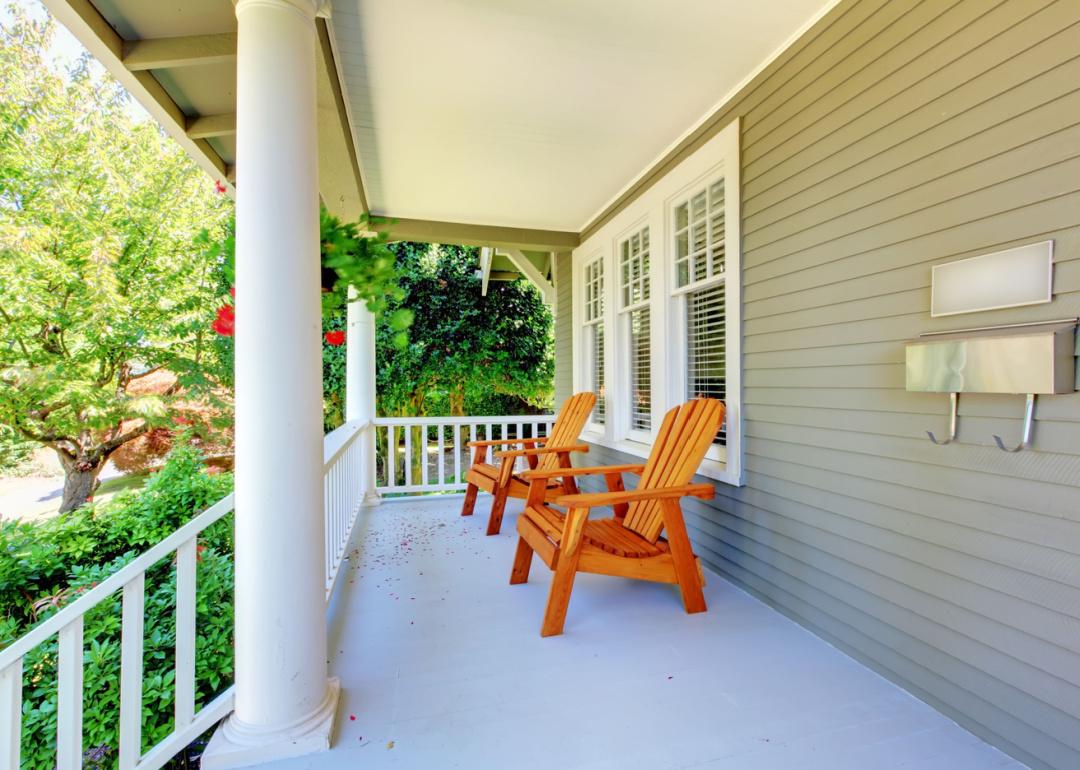
Artazum // Shutterstock
#21. Stafford, Oregon
– Population: 1,999
This self-described “hamlet” was created in 2006 on previously unorganized territory in Clackamas County, southeast of Portland. Its residents have set aside areas that will never be developed and set guiding principles and specific rules for any subdivisions or developments that may be proposed in the community.
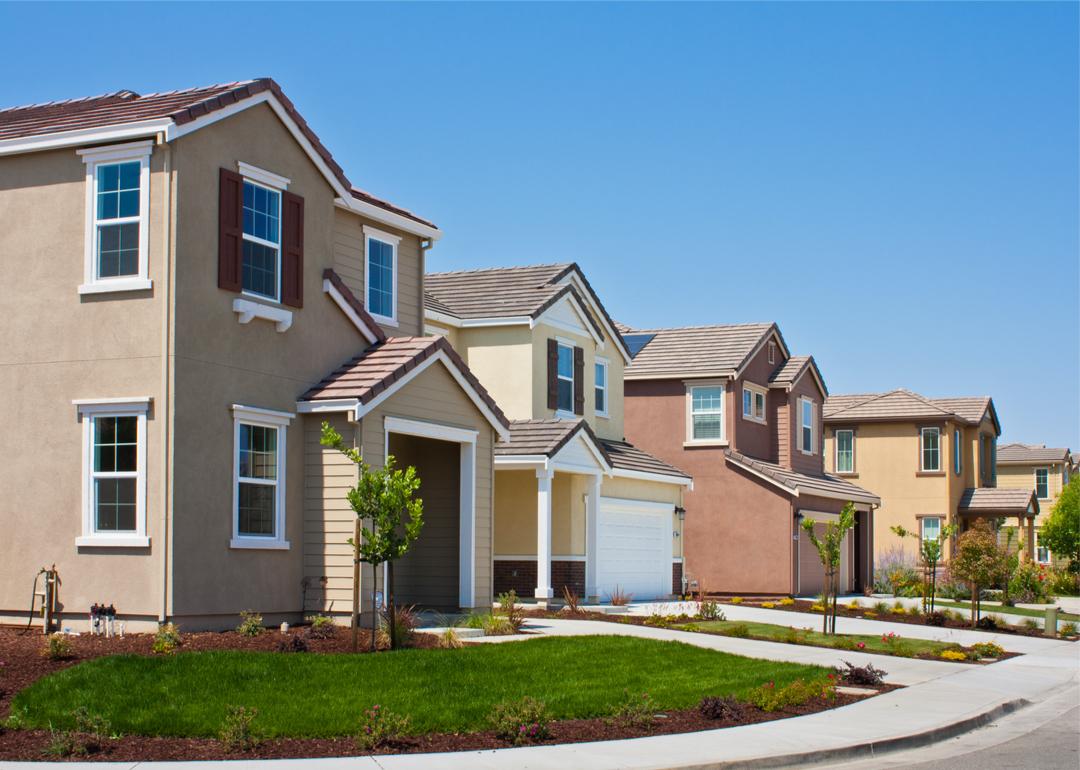
pbk-pg // Shutterstock
#20. Ladera, California
– Population: 1,449
First founded as a housing cooperative in 1946, Ladera has a colorful history. The Peninsula Housing Association—the group of 262 members behind the purchase and development of the land—ran out of money before it could build its dream community. Then, the four non-white families were forced to withdraw from the investment. Only white people were allowed to buy homes in the resulting development—a requirement that remained in the housing rules until 2021.
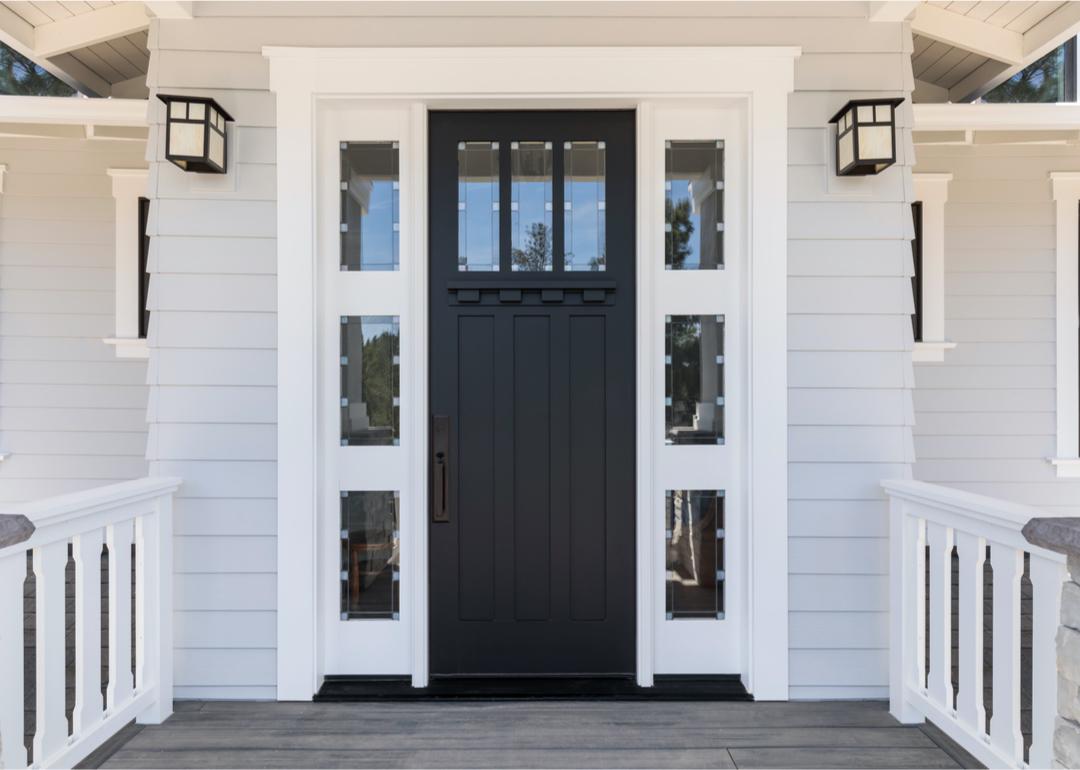
David Papazian // Shutterstock
#19. Portola Valley, California
– Population: 4,458
Though Portola Valley sits on top of the San Andreas Fault, the potential for seismic activity has not hampered the town. What is now known as Portola Valley began as a logging town community called Searsville. Once all the redwoods had been cleared, the logging companies deserted Searsville, and a collection of small farmers and a few wealthy estate owners moved in.
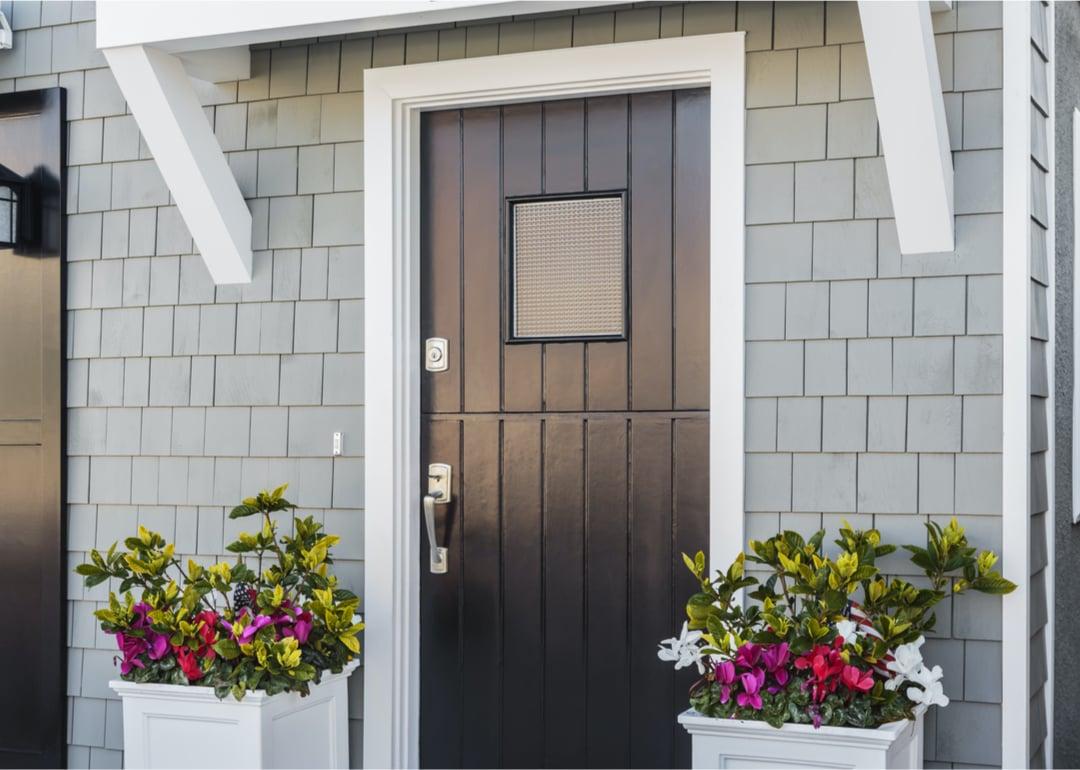
David Papazian // Shutterstock
#18. Mount Hermon, California
– Population: 1,254
This small town in Santa Cruz County was originally known as Tuxedo Junction, a stop on the South Pacific Coast Railroad with a well-known resort. Today, in addition to residential homes, Mount Hermon hosts a Christian youth camp of the same name.
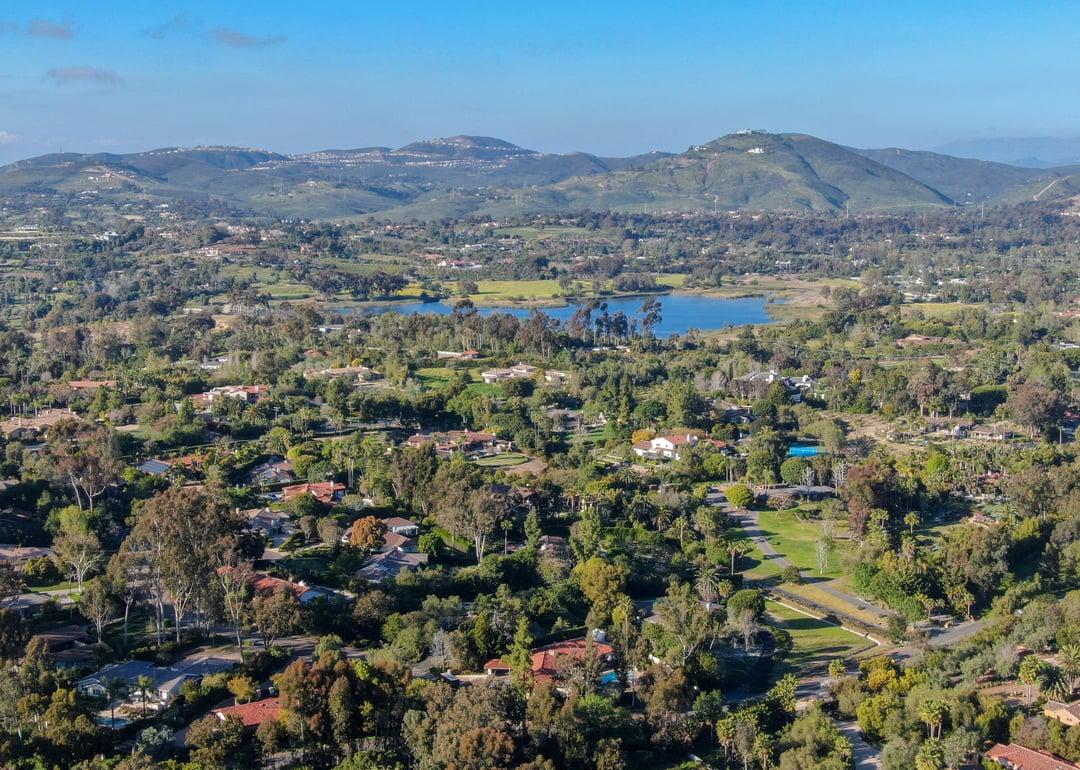
bonandbon // Shutterstock
#17. Rancho Santa Fe, California
– Population: 2,914
Rancho Santa Fe’s history dates back to a time before California’s statehood, when Mexico’s Gov. Pio Pico awarded the area in a land grant to San Diego’s first mayor Juan Osuna in 1840. In the early 1900s, the Atchison, Topeka and Santa Fe Railway company bought the land and planted eucalyptus trees for later use as railroad ties. After that experiment failed, the company decided to turn the land into a residential development, and Rancho Santa Fe, as we know it, was born.
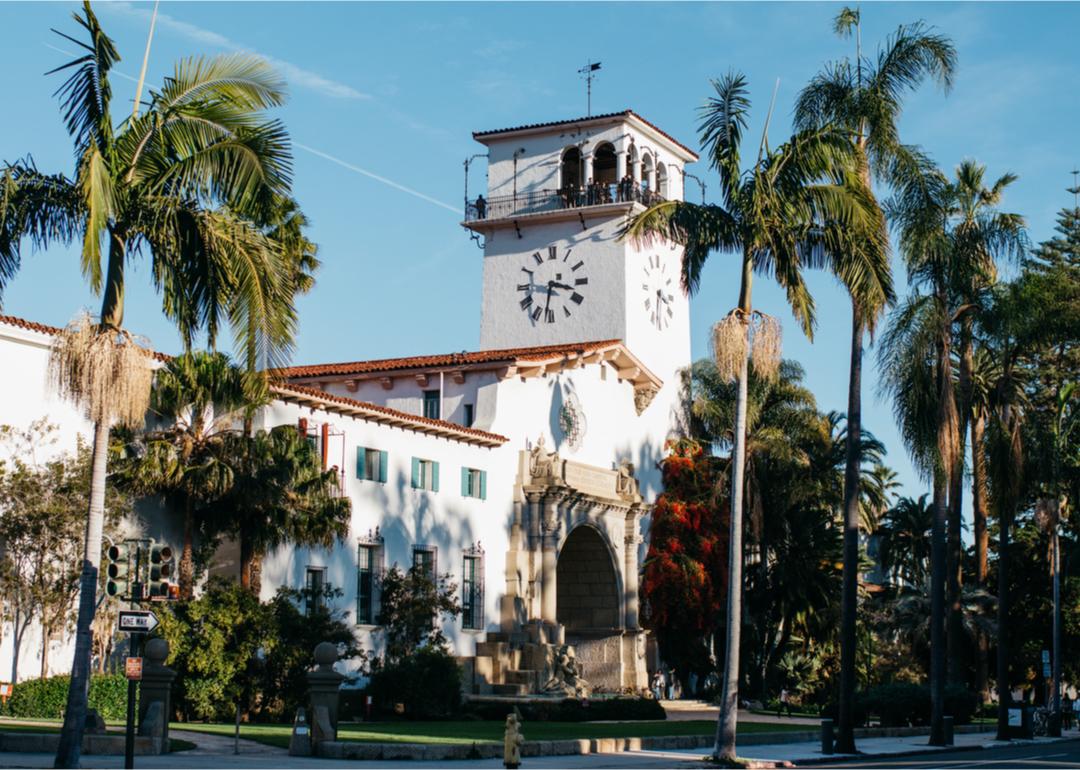
Tania Chatterjee // Shutterstock
#16. Mission Canyon, California
– Population: 2,353
This suburb of Santa Barbara is named for nearby Old Mission Santa Barbara, founded by Spanish Franciscan friars in 1786, and the dramatic canyon landscape. Visitors flock to this neighborhood for the lush Santa Barbara Botanic Garden and several popular hiking trails.
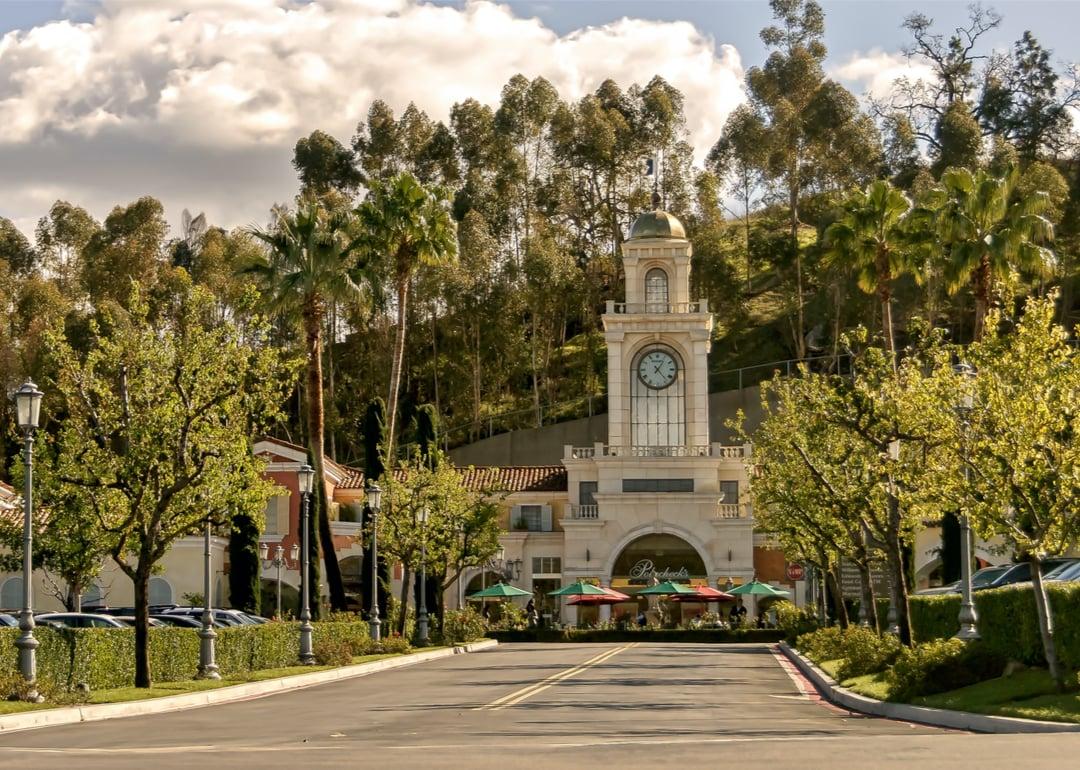
Lux Blue // Shutterstock
#15. Hidden Hills, California
– Population: 2,182
Known for celebrity residents like Kardashian family members, music stars, and actors, Hidden Hills offers a rarefied version of a small-town lifestyle. This gated residential community developed in the mid-1950s boasts an extensive network of equestrian trails—some residents even pick up their kids on horseback. With so many A-list celebrities in the community, Hidden Hills also takes privacy extremely seriously. The community has even banned Google’s photography vehicles from recording the area for Google Street View.
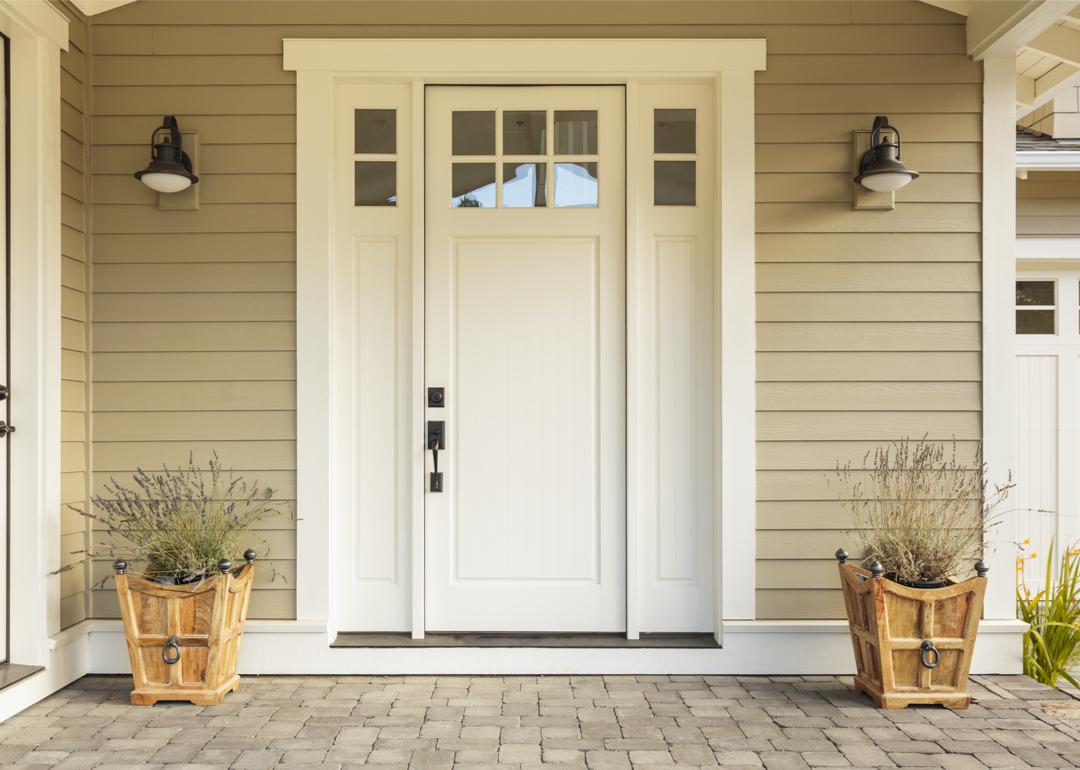
David Papazian // Shutterstock
#14. Sleepy Hollow, California
– Population: 2,511
With just 750 homes, Sleepy Hollow is a quiet, peaceful Bay Area town beloved by equestrians and hikers alike for its proximity to two nature preserves. During World War II, the Army used a Sleepy Hollow golf course for the secret storage of munitions.
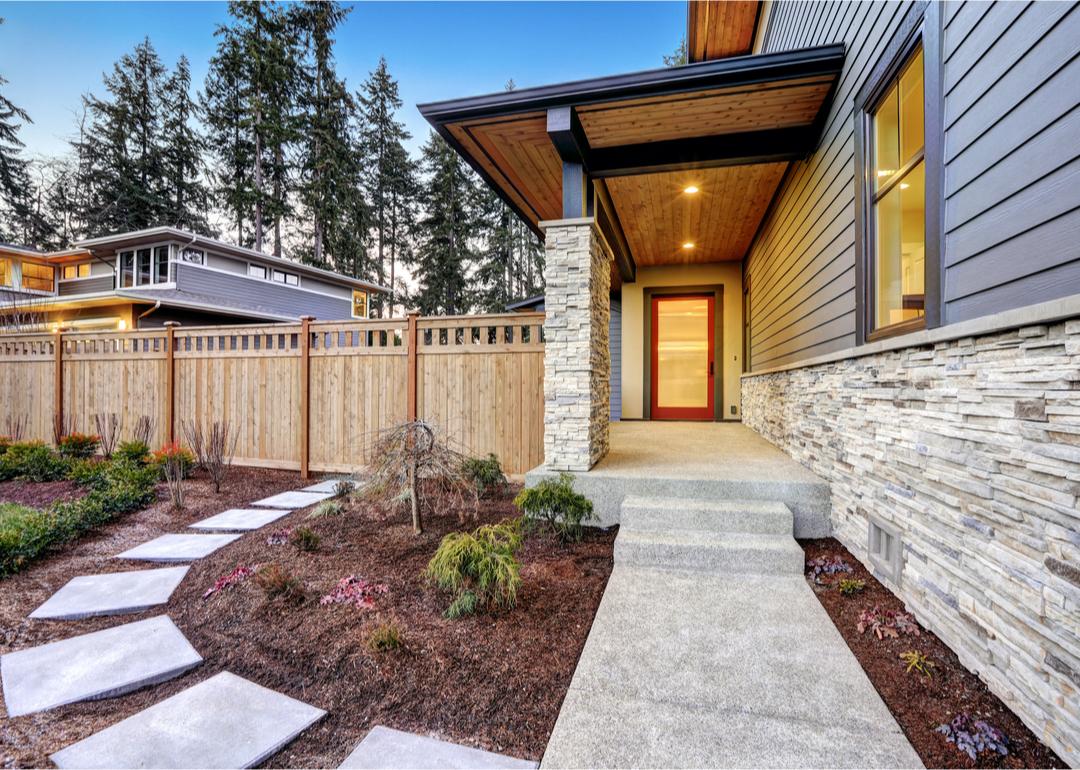
Artazum // Shutterstock
#13. Medina, Washington
– Population: 2,928
Halfway between the Seattle suburbs of Bellevue and Kirkland, this community on the shore of Lake Washington is an attractive choice for families—as well as a few well-known wealthy residents like Jeff Bezos and Bill Gates. It’s also an expensive place to buy a home: According to Zillow, the median home price in Medina is more than $4 million. It’s no surprise that Medina was ranked the eighth-richest ZIP code by Bloomberg.
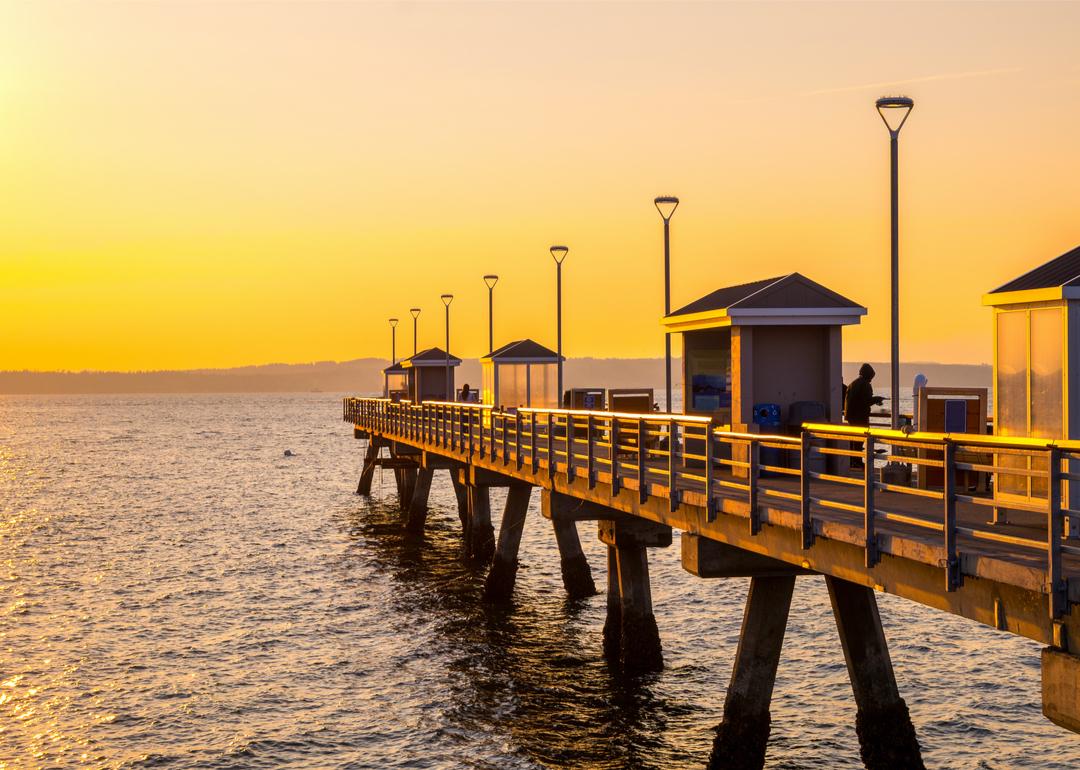
Nadia Yong // Shutterstock
#12. Woodway, Washington
– Population: 1,119
Half an hour north of Seattle, you’ll find Woodway: a self-described “quiet place” where residents love to walk and bike around the evergreen-lined lanes and local parks. The town’s history dates back to 1912 when David Whitcomb Sr. developed 400 acres into modest, country-style homes.
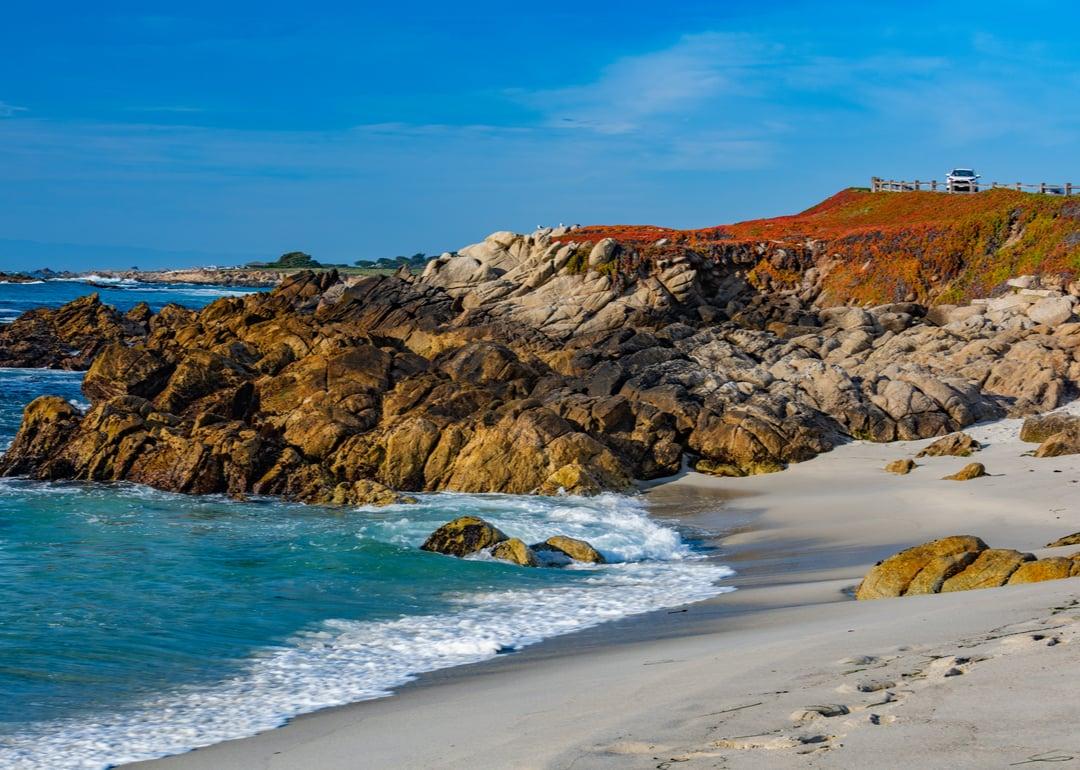
Abbie Warnock-Matthews // Shutterstock
#11. Del Monte Forest, California
– Population: 3,604
This unincorporated community in Monterey County is known for its picturesque views. Visitors might want to spend a leisurely afternoon checking out all the sights on 17-Mile Drive, including the Lone Cypress—a rugged, salt air-pruned tree clinging to a craggy rock in the bay—and the iconic Pebble Beach Golf Links course. Though Pebble Beach is technically a separate community, it sits within Del Monte Forest.
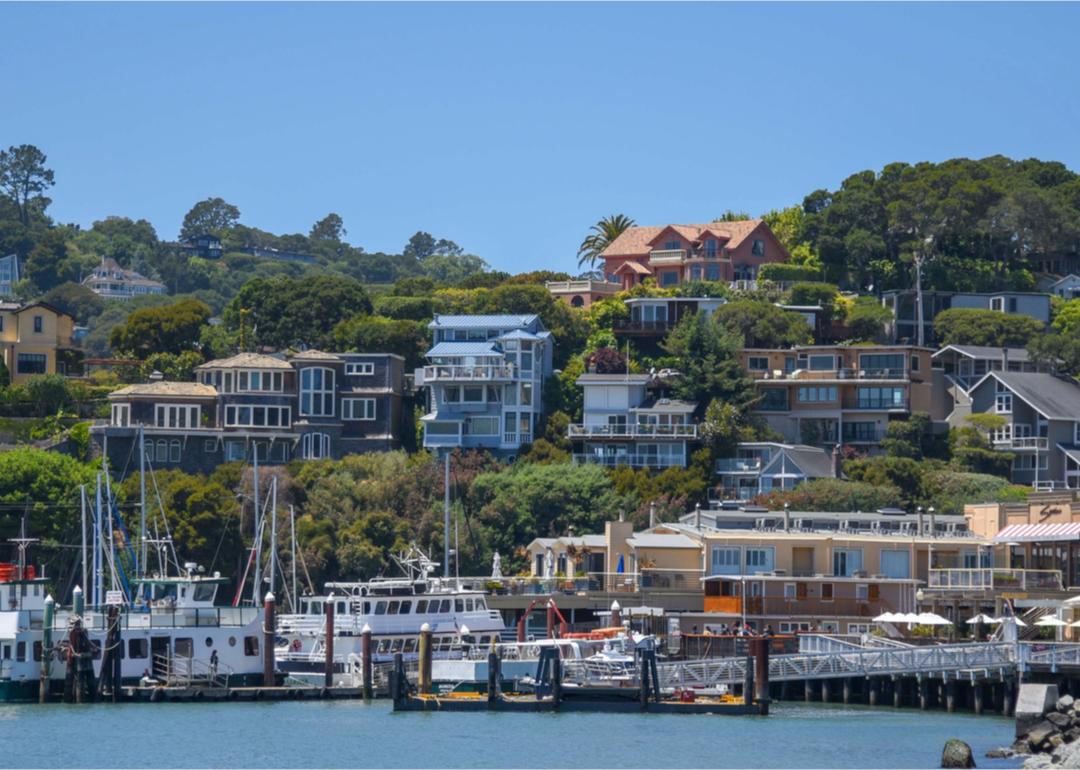
FourthNovemberStudio // Shutterstock
#10. Belvedere, California
– Population: 2,309
In 1896, 33 residents voted to incorporate Belvedere as a city. The San Francisco Bay borders the town on three sides: It’s technically composed of two islands and a lagoon, giving the homes here unbeatable views.
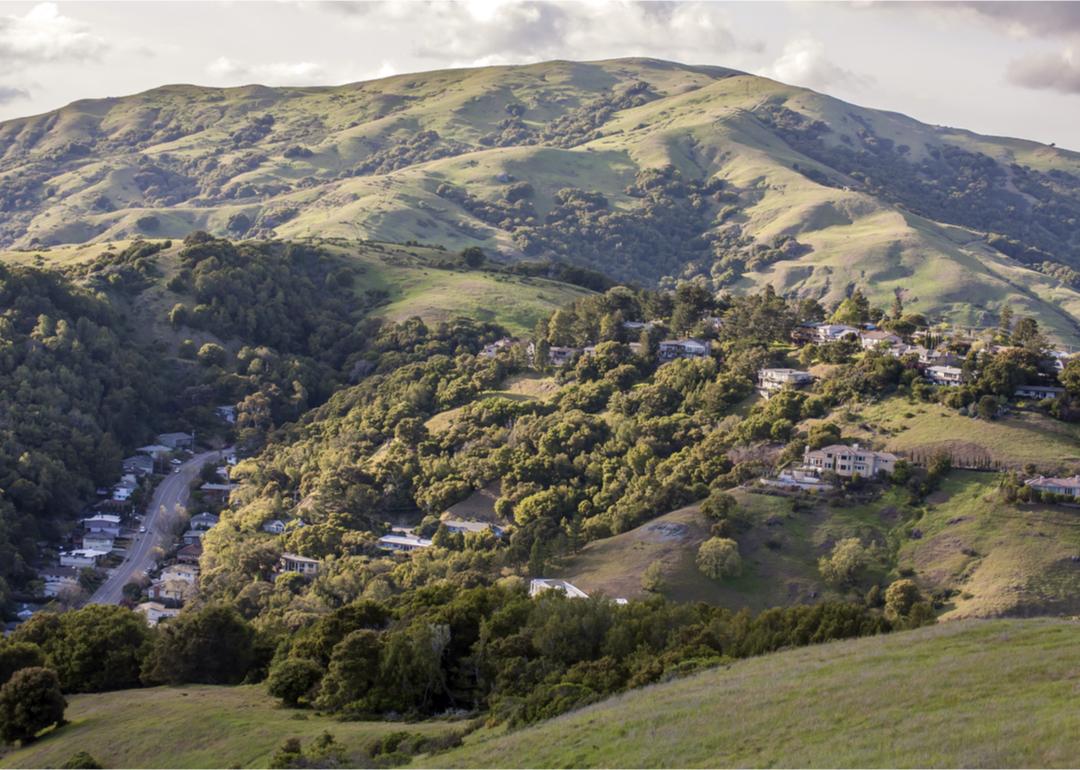
Marben // Shutterstock
#9. Ross, California
– Population: 2,405
First incorporated in 1908, this quaint town in Marin County is run by a five-person town council and a town manager. Ross has a real small-town feel, with just two churches, three schools, and a few cultural institutions like the Marin Art and Garden Center as well as a library run by the historical society.
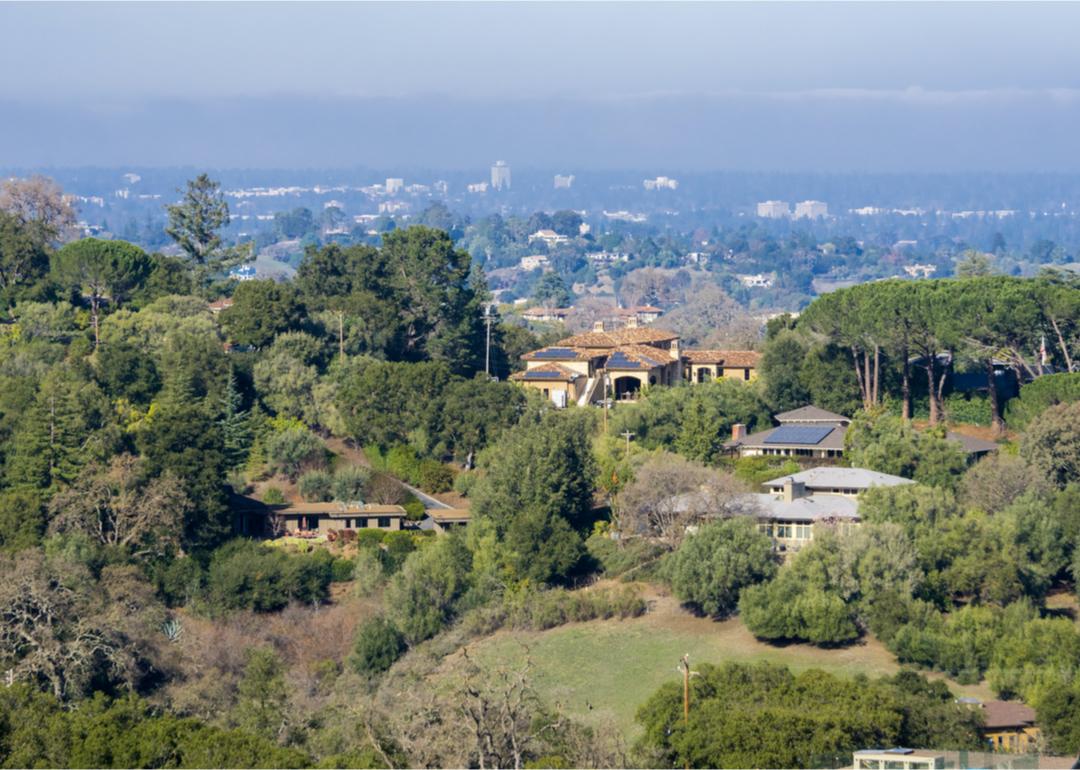
Sundry Photography // Shutterstock
#8. Loyola, California
– Population: 3,564
Like the neighboring towns of Mountain View and Los Altos, Loyola is an affluent community. In December 2022, the median price buyers paid for Loyola homes was $3.8 million. Top-rated schools, luxury amenities like a country club, and its proximity to the Bay Area make Loyola an appealing—if pricey—place to live.
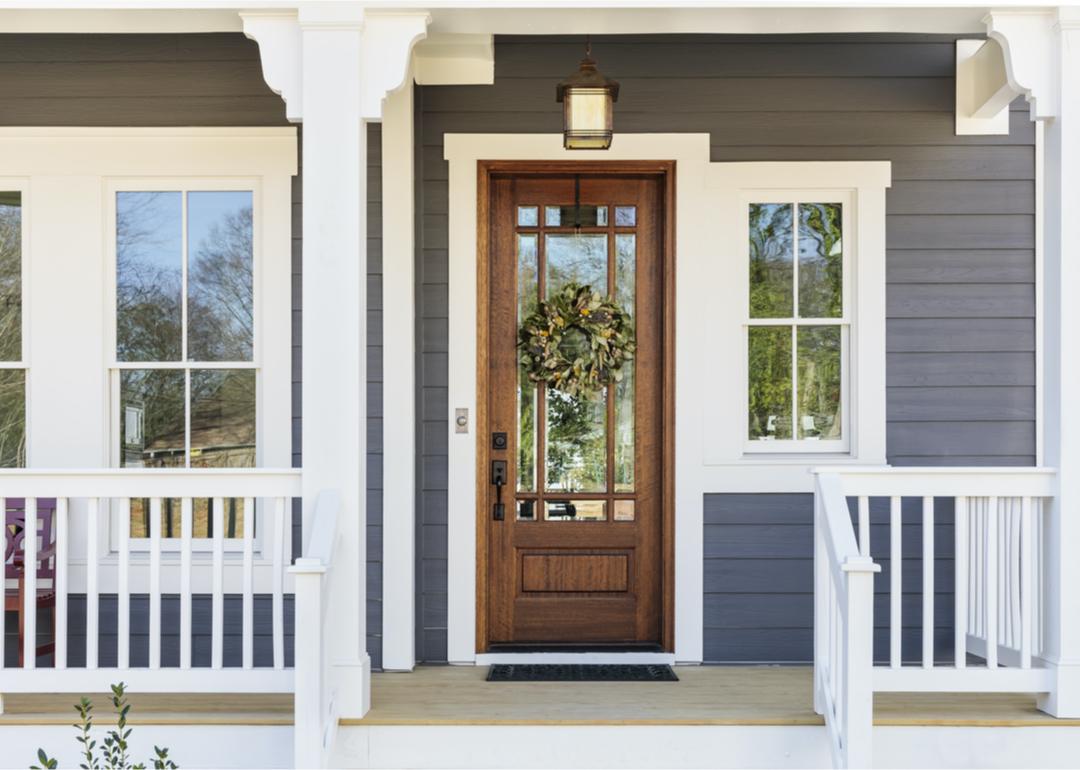
David Papazian // Shutterstock
#7. Monte Sereno, California
– Population: 3,502
When a community began forming in what is now Monte Sereno in the early 1900s, the area was rural and agricultural. Today, you won’t find any orchards, farms, or livestock, just a peaceful residential community that has been home to author John Steinbeck, painter Thomas Kinkade, and Beat poet Neal Cassady over the years.
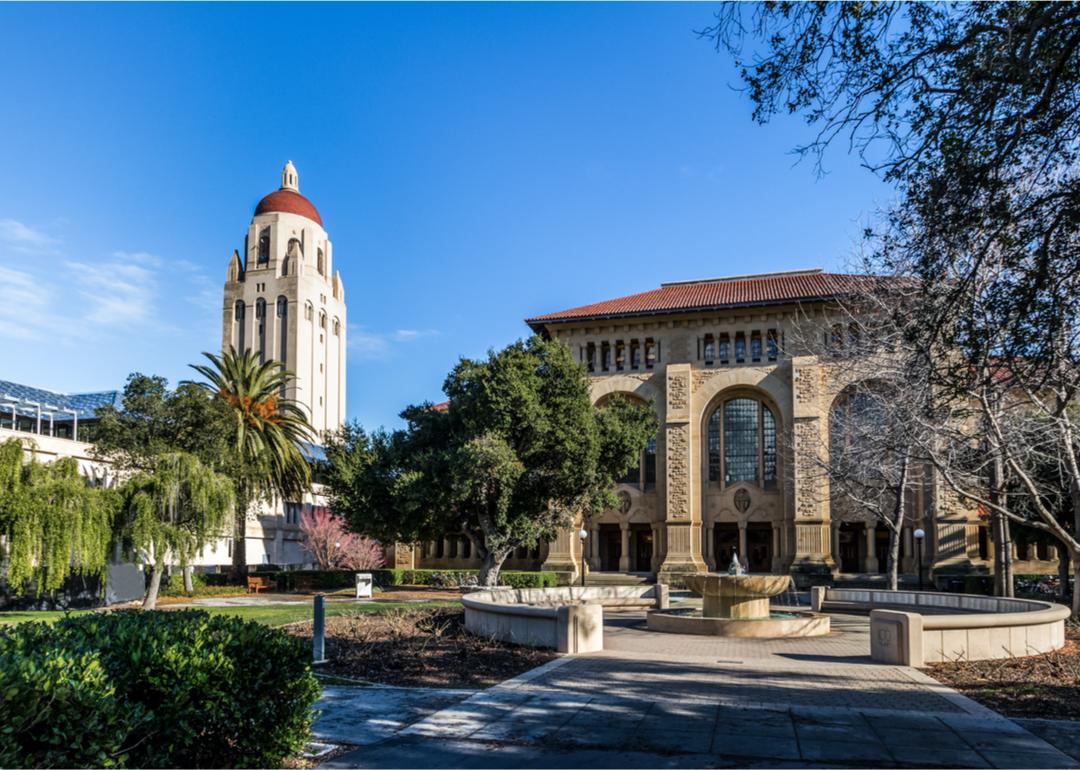
Diego Grandi // Shutterstock
#6. West Menlo Park, California
– Population: 3,492
This small community sits just west of Stanford University, with most of its bars, restaurants, and local businesses lining Alameda de las Pulgas. Excellent school districts make this area particularly sought after by Bay Area families.

David A Litman // Shutterstock
#5. Carmel-by-the-Sea, California
– Population: 3,296
A popular tourist destination in its own right, Carmel-by-the-Sea is renowned for its charming downtown, historic mission, top-notch restaurants, and stunning Carmel Beach. Some of the town’s first residents were artists such as author Jack London and poet Robinson Jeffers, giving the city an intellectual bent and creative spirit.
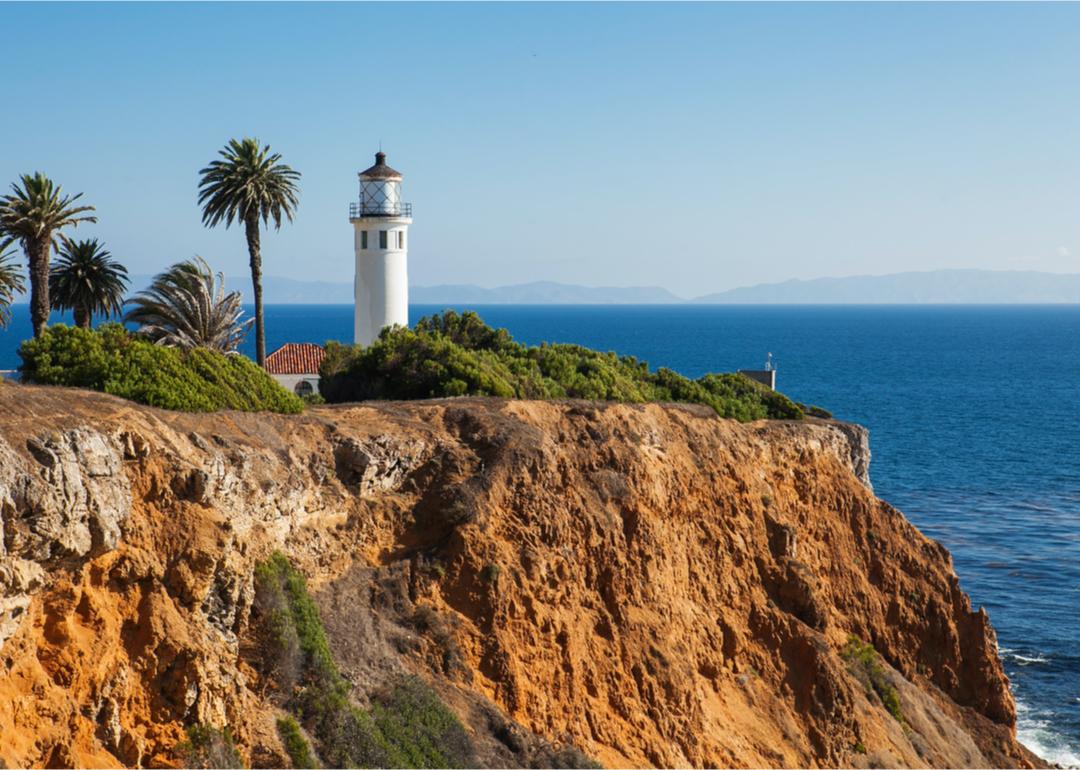
MILA Zed // Shutterstock
#4. Rolling Hills, California
– Population: 1,436
This gated residential community on the Palos Verdes Peninsula covers just three square miles, but each of the 700 properties has at least one acre and is zoned for keeping horses. Nearby attractions include the Palos Verdes Art Center, the hiking and equestrian trails in the Portuguese Bend Reserve, and the architecturally significant Wayfarers Chapel designed by Lloyd Wright, the son of famed architect Frank Lloyd Wright.
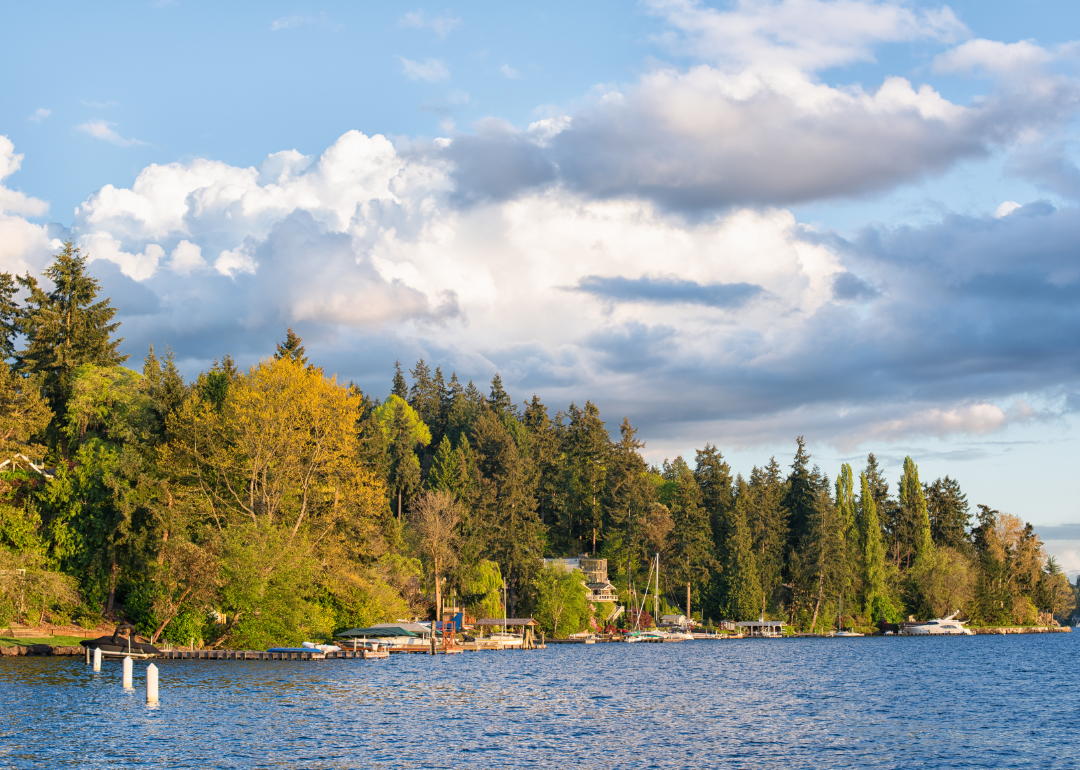
Canva
#3. Yarrow Point, Washington
– Population: 1,365
Set on a peninsula in Lake Washington, Yarrow Point borders the #1 town on this list. Though the first homesteads date back to the 1880s, Yarrow Point wasn’t incorporated until 1959. Nearly one-fourth of the homes here have waterfront views—but even residents who aren’t so lucky can enjoy public parks like the Wetherill Nature Preserve and Road End Beach.
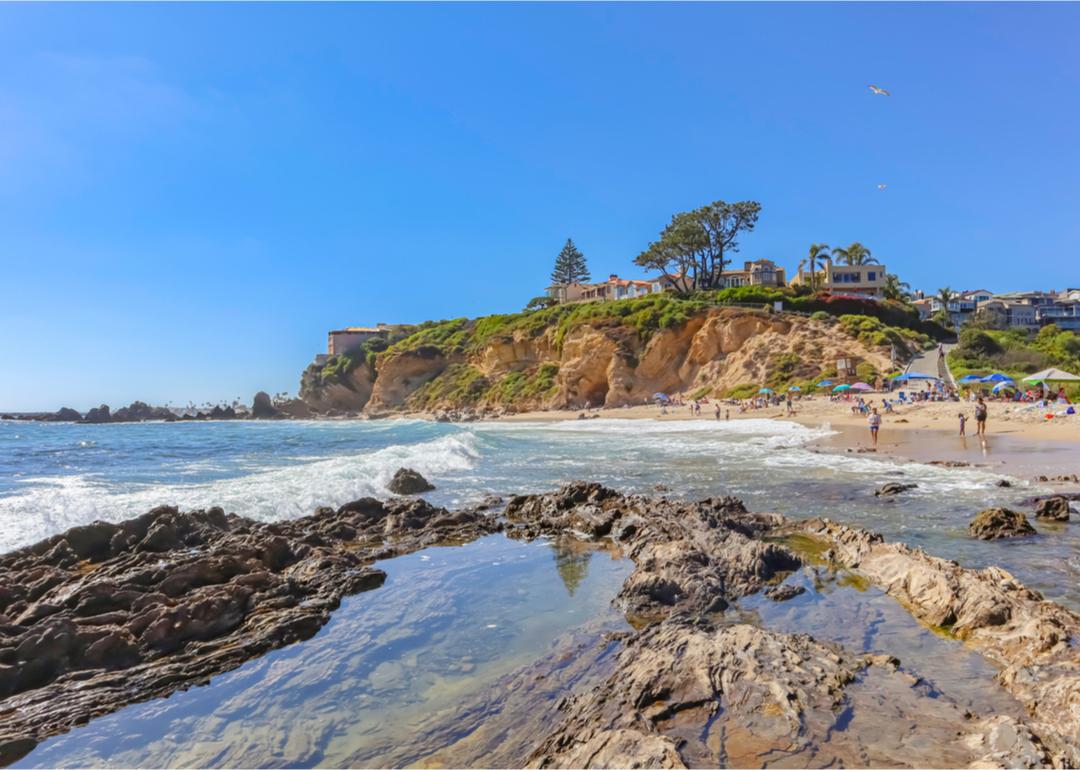
LuvAlisa // Shutterstock
#2. Del Mar, California
– Population: 4,008
Another coastal destination, Del Mar’s gorgeous beaches, legendary horse racing, and delightful downtown village are attractive to both visitors and prospective residents. The city hosts about 2 million visitors annually.
Canva
#1. Clyde Hill, Washington
– Population: 3,118
From some of Clyde Hill’s higher elevations, you can spy views of Mount Rainier, the Olympic Mountains, and the Cascade Mountain Range, in addition to Lake Washington and the Seattle skyline. The area was first settled in 1882 by Irish immigrant Patrick Downey, who farmed strawberries on his claim. Clyde Hill made national news in 1975 when its mayoral race ended in an even tie; the contenders flipped a coin to decide the race.
Founded in 2017, Stacker combines data analysis with rich editorial context, drawing on authoritative sources and subject matter experts to drive storytelling.
You may like
Business
5 tech advancements sports venues have added since your last event
Published
23 hours agoon
April 19, 2024
In today’s digital climate, consuming sports has never been easier. Thanks to a plethora of streaming sites, alternative broadcasts, and advancements to home entertainment systems, the average fan has myriad options to watch and learn about their favorite teams at the touch of a button—all without ever having to leave the couch.
As a result, more and more sports venues have committed to improving and modernizing their facilities and fan experiences to compete with at-home audiences. Consider using mobile ticketing and parking passes, self-service kiosks for entry and ordering food, enhanced video boards, and jumbotrons that supply data analytics and high-definition replays. These innovations and upgrades are meant to draw more revenue and attract various sponsored partners. They also deliver unique and convenient in-person experiences that rival and outmatch traditional ways of enjoying games.
In Los Angeles, the Rams and Chargers’ SoFi Stadium has become the gold standard for football venues. It’s an architectural wonder with closer views, enhanced hospitality, and a translucent roof that cools the stadium’s internal temperature.
The Texas Rangers’ ballpark, Globe Life Field, added field-level suites and lounges that resemble the look and feel of a sports bar. Meanwhile, the Los Angeles Clippers are building a new arena (in addition to retail space, team offices, and an outdoor public plaza) that will seat 18,000 people and feature a fan section called The Wall, which will regulate attire and rooting interest.
It’s no longer acceptable to operate with old-school facilities and technology. Just look at Commanders Field (formerly FedExField), home of the Washington Commanders, which has faced criticism for its faulty barriers, leaking ceilings, poor food options, and long lines. Understandably, the team has been attempting to find a new location to build a state-of-the-art stadium and keep up with the demand for high-end amenities.
As more organizations audit their stadiums and arenas and keep up with technological innovations, Uniqode compiled a list of the latest tech advancements to coax—and keep—fans inside venues.
![]()
Jeff Gritchen/MediaNews Group/Orange County Register // Getty Images
Just Walk Out technology
After successfully installing its first cashierless grocery store in 2020, Amazon has continued to put its tracking technology into practice.
In 2023, the Seahawks incorporated Just Walk Out technology at various merchandise stores throughout Lumen Field, allowing fans to purchase items with a swipe and scan of their palms.
The radio-frequency identification system, which involves overhead cameras and computer vision, is a substitute for cashiers and eliminates long lines.
RFID is now found in a handful of stadiums and arenas nationwide. These stores have already curbed checkout wait times, eliminated theft, and freed up workers to assist shoppers, according to Jon Jenkins, vice president of Just Walk Out tech.
Billie Weiss/Boston Red Sox // Getty Images
Self-serve kiosks
In the same vein as Amazon’s self-scanning technology, self-serve kiosks have become a more integrated part of professional stadiums and arenas over the last few years. Some of these function as top-tier vending machines with canned beers and nonalcoholic drinks, shuffling lines quicker with virtual bartenders capable of spinning cocktails and mixed drinks.
The kiosks extend past beverages, as many college and professional venues have started using them to scan printed and digital tickets for more efficient entrance. It’s an effort to cut down lines and limit the more tedious aspects of in-person attendance, and it’s led various competing kiosk brands to provide their specific conveniences.
Kyle Rivas // Getty Images
Mobile ordering
Is there anything worse than navigating the concourse for food and alcohol and subsequently missing a go-ahead home run, clutch double play, or diving catch?
Within the last few years, more stadiums have eliminated those worries thanks to contactless mobile ordering. Fans can select food and drink items online on their phones to be delivered right to their seats. Nearly half of consumers said mobile app ordering would influence them to make more restaurant purchases, according to a 2020 study at PYMNTS. Another study showed a 22% increase in order size.
Many venues, including Yankee Stadium, have taken notice and now offer personalized deliveries in certain sections and established mobile order pick-up zones throughout the ballpark.
Darrian Traynor // Getty Images
QR codes at seats
Need to remember a player’s name? Want to look up an opponent’s statistics at halftime? The team at Digital Seat Media has you covered.
Thus far, the company has added seat tags to more than 50 venues—including two NFL stadiums—with QR codes to promote more engagement with the product on the field. After scanning the code, fans can access augmented reality features, look up rosters and scores, participate in sponsorship integrations, and answer fan polls on the mobile platform.
Boris Streubel/Getty Images for DFL // Getty Images
Real-time data analytics and generative AI
As more venues look to reinvigorate the in-stadium experience, some have started using generative artificial intelligence and real-time data analytics. Though not used widely yet, generative AI tools can create new content—text, imagery, or music—in conjunction with the game, providing updates, instant replays, and location-based dining suggestions
Last year, the Masters golf tournament even began including AI score projections in its mobile app. Real-time data is streamlining various stadium pitfalls, allowing operation managers to monitor staffing issues at busy food spots, adjust parking flows, and alert custodians to dirty or damaged bathrooms. The data also helps with security measures. Open up an app at a venue like the Honda Center in Anaheim, California, and report safety issues or belligerent fans to help better target disruptions and preserve an enjoyable experience.
Story editing by Nicole Caldwell. Copy editing by Paris Close. Photo selection by Lacy Kerrick.
This story originally appeared on Uniqode and was produced and
distributed in partnership with Stacker Studio.
Founded in 2017, Stacker combines data analysis with rich editorial context, drawing on authoritative sources and subject matter experts to drive storytelling.
Business
Import costs in these industries are keeping prices high
Published
1 week agoon
April 11, 2024
Inflation has cooled substantially, but Americans are still feeling the strain of sky-high prices. Consumers have to spend more on the same products, from the grocery store to the gas pump, than ever before.
Increased import costs are part of the problem. The U.S. is the largest goods importer in the world, bringing in $3.2 trillion in 2022. Import costs rose dramatically in 2021 and 2022 due to shipping constraints, world events, and other supply chain interruptions and cost pressures. At the June 2022 peak, import costs for all commodities were up 18.6% compared to January 2020.
While import costs have since fallen most months—helping to lower inflation—they remain nearly 12% above what they were in 2020. And beginning in 2024, import costs began to rise again, with January seeing the highest one-month increase since March 2022.
Machinery Partner used Bureau of Labor Statistics data to identify the soaring import costs that have translated to higher costs for Americans. Imports in a few industries have had an outsized impact, helping drive some of the overall spikes. Crop production, primary metal manufacturing, petroleum and coal product manufacturing, and oil and gas extraction were the worst offenders, with costs for each industry remaining at least 20% above 2020.
![]()

Machinery Partner
Imports related to crops, oil, and metals are keeping costs up
At the mid-2022 peak, import costs related to oil, gas, petroleum, and coal products had the highest increases, doubling their pre-pandemic costs. Oil prices went up globally as leaders anticipated supply disruptions from the conflict in Ukraine. The U.S. and other allied countries put limits on Russian revenues from oil sales through a price cap of oil, gas, and coal from the country, which was enacted in 2022.
This activity around the world’s second-largest oil producer pushed prices up throughout the market and intensified fluctuations in crude oil prices. Previously, the U.S. had imported hundreds of thousands of oil barrels from Russia per day, making the country a leading source of U.S. oil. In turn, the ban affected costs in the U.S. beyond what occurred in the global economy.
Americans felt this at the pump—with gasoline prices surging 60% for consumers year-over-year in June 2022 and remaining elevated to this day—but also throughout the economy, as the entire supply chain has dealt with higher gas, oil, and coal prices.
Some of the pressure from petroleum and oil has shifted to new industries: crop production and primary metal manufacturing. In each of these sectors, import costs in January were up about 40% from 2020.
Primary metal manufacturing experienced record import price growth in 2021, which continued into early 2022. The subsequent monthly and yearly drops have not been substantial enough to bring costs down to pre-COVID levels. Bureau of Labor Statistics reporting shows that increasing alumina and aluminum production prices had the most significant influence on primary metal import prices. Aluminum is widely used in consumer products, from cars and parts to canned beverages, which in turn inflated rapidly.
Aluminum was in short supply in early 2022 after high energy costs—i.e., gas—led to production cuts in Europe, driving aluminum prices to a 13-year high. The U.S. also imposes tariffs on aluminum imports, which were implemented in 2018 to cut down on overcapacity and promote U.S. aluminum production. Suppliers, including Canada, Mexico, and European Union countries, have exemptions, but the tax still adds cost to imports.
U.S. agricultural imports have expanded in recent decades, with most products coming from Canada, Mexico, the EU, and South America. Common agricultural imports include fruits and vegetables—especially those that are tropical or out-of-season—as well as nuts, coffee, spices, and beverages. Turmoil with Russia was again a large contributor to cost increases in agricultural trade, alongside extreme weather events and disruptions in the supply chain. Americans felt these price hikes directly at the grocery store.
The U.S. imports significantly more than it exports, and added costs to those imports are felt far beyond its ports. If import prices continue to rise, overall inflation would likely follow, pushing already high prices even further for American consumers.
Story editing by Shannon Luders-Manuel. Copy editing by Kristen Wegrzyn.
This story originally appeared on Machinery Partner and was produced and
distributed in partnership with Stacker Studio.
Founded in 2017, Stacker combines data analysis with rich editorial context, drawing on authoritative sources and subject matter experts to drive storytelling.
Business
The states where people pay the most in car insurance premiums
Published
2 weeks agoon
April 4, 2024
Nearly every state requires drivers to carry car insurance, but the laws vary, and many factors affect the cost of coverage.
Some are controllable, at least to degrees: the type of car you have and your credit history. Some are not: your age and gender. Your marital status, place of residence, and claims history are among the other variables that go into it.
Across the United States, premiums are soaring, rising 20% year over year and increasing six times faster than consumer prices overall as of December 2023, CBS reported. Last September, CNN noted that car insurance rates jumped more in the previous year than they had since 1976.
CBS pointed to many potential reasons for these increases in prices. Coronavirus pandemic-era issues have made buying, fixing, and replacing vehicles costlier. Extreme weather events caused by climate change also damage more vehicles, while insurance companies are increasing their business costs. Severe and more frequent crashes are to blame as well, CNN reported.
On top of these, local factors such as population density, the number of uninsured drivers, and the frequency of insurance claims all affect premiums, which can lead motorists to change or switch their coverage, use other modes of transportation, or even alter decisions about when to buy a vehicle or what to look for.
To see how geography affects cost, Cheap Insurance mapped the states where people pay the most in car insurance premiums using MarketWatch data. Premium estimates were based on full-coverage car insurance for a 35-year-old driver with good credit and a clean driving record. Data accurate as of February 2024.
![]()
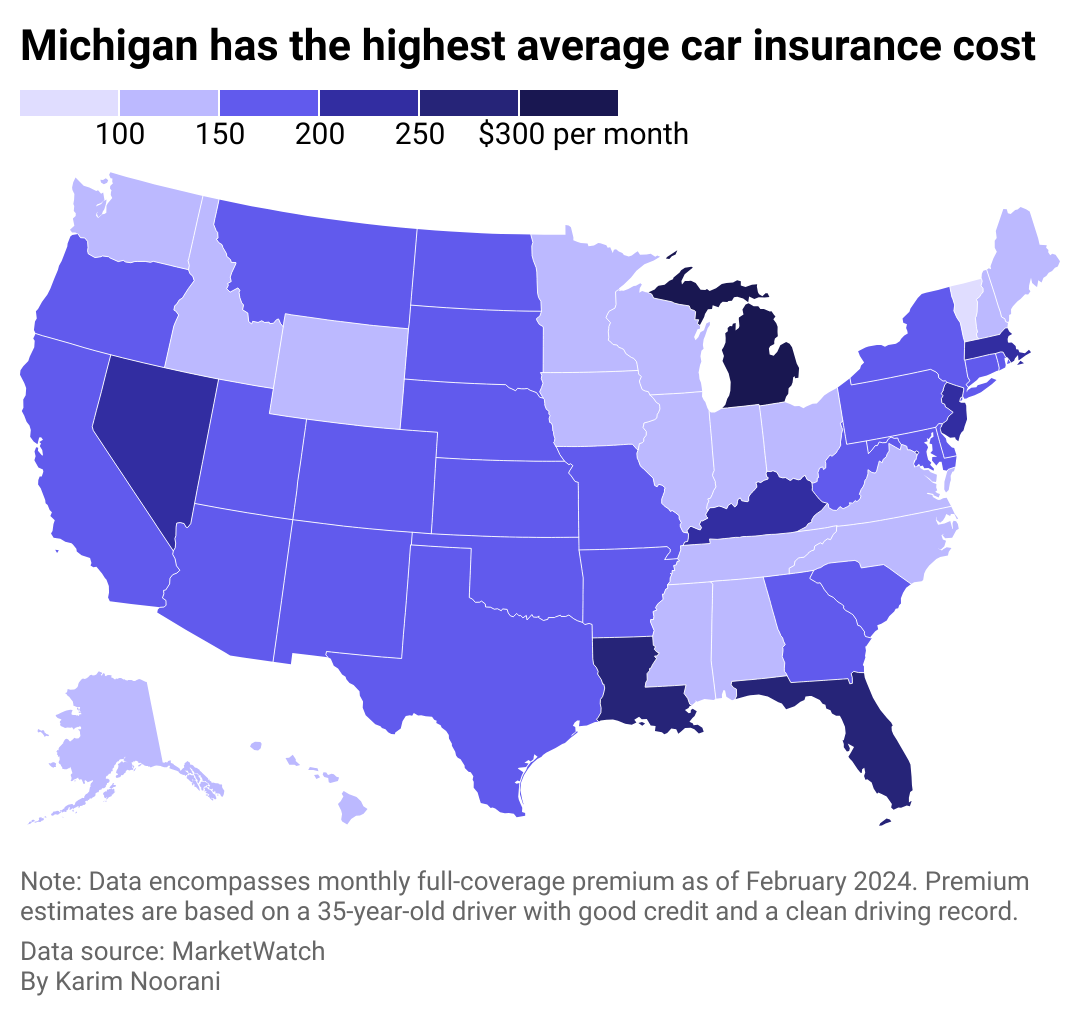
Cheap Insurance
Americans pay $167 per month on average for full-coverage insurance
There are common denominators among the five states where it’s most expensive to have car insurance: Michigan, Florida, Louisiana, Nevada, and Kentucky. Washington D.C. is another pricey locale, ranking #4 overall.
Three of these six are no-fault jurisdictions and require additional coverage beyond coverage to pay for medical costs. Michigan notably calls for $250,000 in personal injury protection (though people with Medicaid and Medicare may qualify for lower limits), $1 million in personal property insurance for damage done by your car in Michigan, and residual bodily injury and property damage liability that starts at $250,000 for a person harmed in an accident.
Other commonalities between these states include high urban population densities. At least 9 in 10 people in Nevada, Florida, and Washington D.C. live in cities and urban areas, which leads to more crashes and thefts and high rates of uninsured drivers and lawsuits. Additionally, Louisiana, Florida, and Kentucky rank #5, #8, and #10, respectively, in motor vehicle crash deaths per 100 million vehicle miles traveled in 2021 based on Department of Transportation data analyzed by the Insurance Institute for Highway Safety.
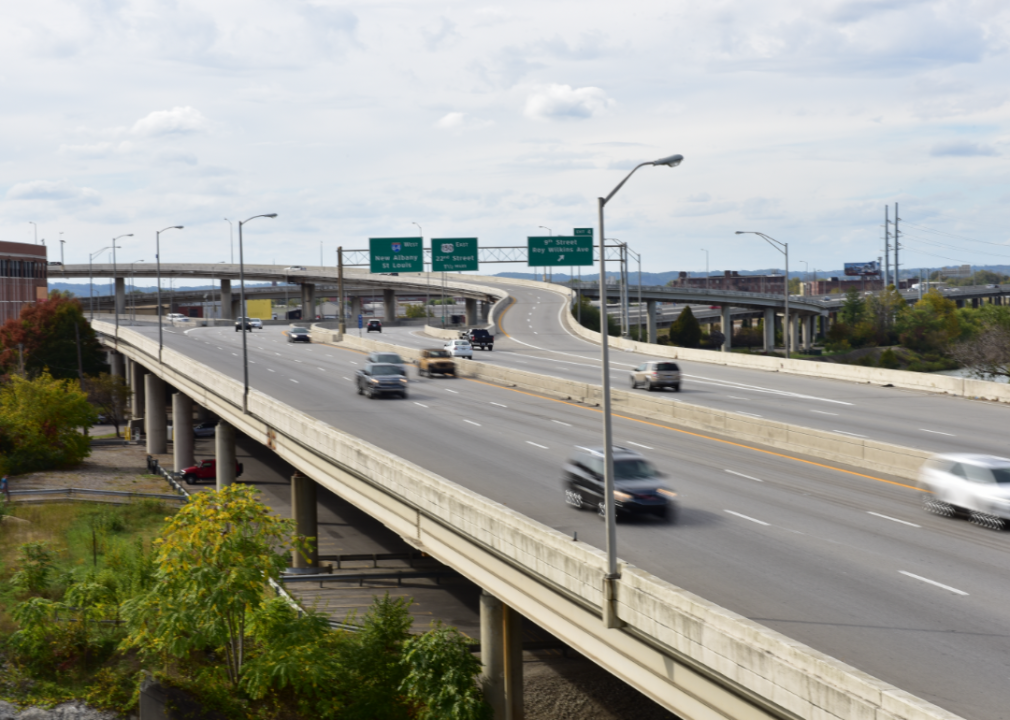
Canva
#5. Kentucky
– Monthly full-coverage insurance: $210
– Monthly liability insurance: $57

Canva
#4. Nevada
– Monthly full-coverage insurance: $232
– Monthly liability insurance: $107
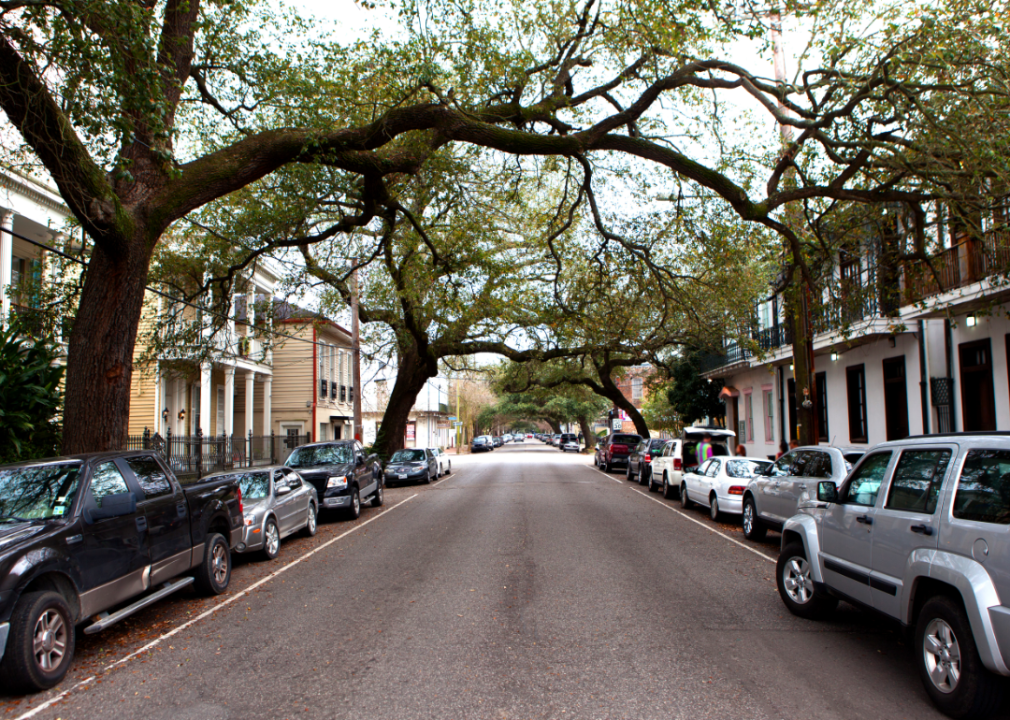
Canva
#3. Louisiana
– Monthly full-coverage insurance: $253
– Monthly liability insurance: $77
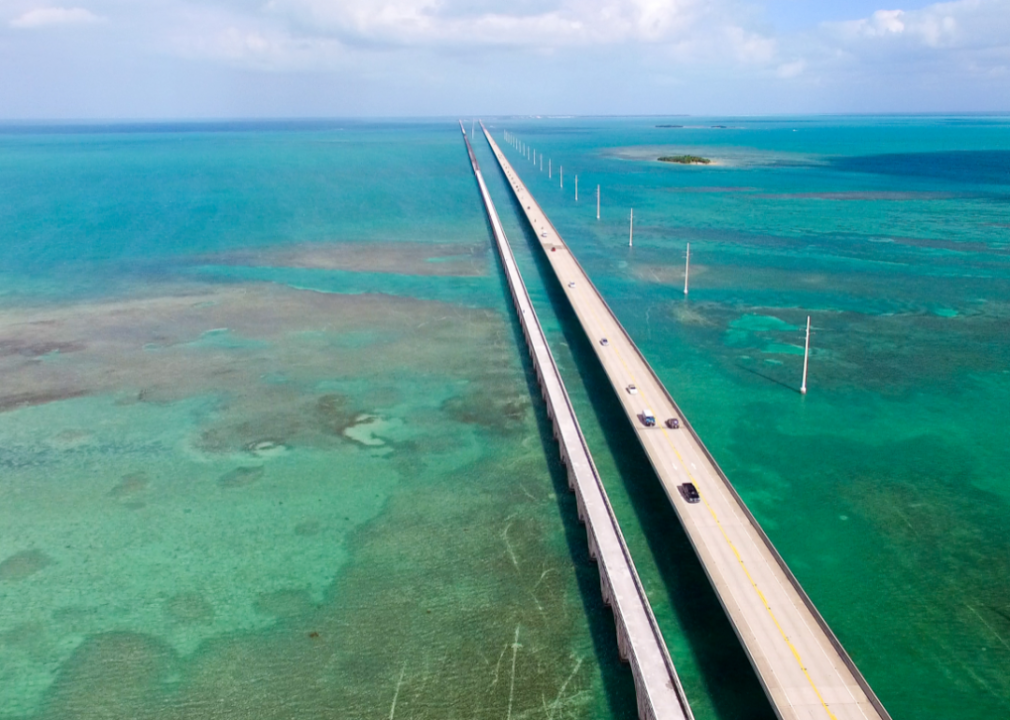
Canva
#2. Florida
– Monthly full-coverage insurance: $270
– Monthly liability insurance: $115
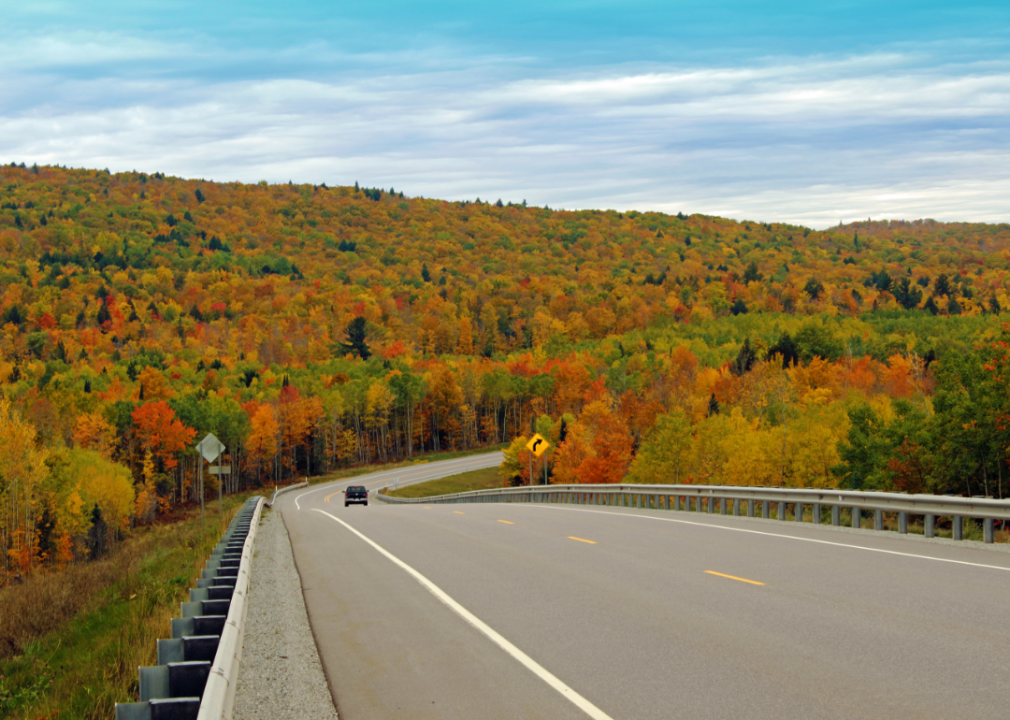
Canva
#1. Michigan
– Monthly full-coverage insurance: $304
– Monthly liability insurance: $113
Story editing by Carren Jao. Copy editing by Paris Close. Photo selection by Lacy Kerrick.
This story originally appeared on Cheap Insurance and was produced and
distributed in partnership with Stacker Studio.
Founded in 2017, Stacker combines data analysis with rich editorial context, drawing on authoritative sources and subject matter experts to drive storytelling.
Featured
-

 Business4 months ago
Business4 months agomesh conference goes deep on AI, with experts focusing in on training, ethics, and risk
-

 Business4 months ago
Business4 months agoSkill-based hiring is the answer to labour shortages, BCG report finds
-

 Events6 months ago
Events6 months agoTop 5 tech and digital transformation events to wrap up 2023
-

 People4 months ago
People4 months agoHow connected technologies trim rework and boost worker safety in hands-on industries
-

 Events3 months ago
Events3 months agoThe Northern Lights Technology & Innovation Forum comes to Calgary next month

